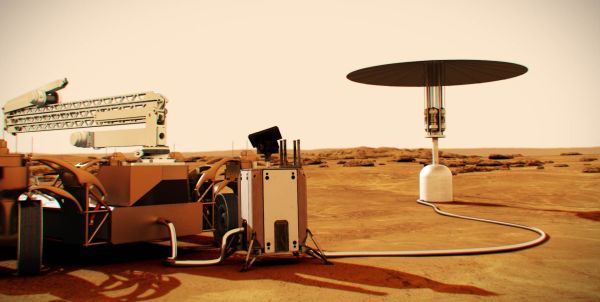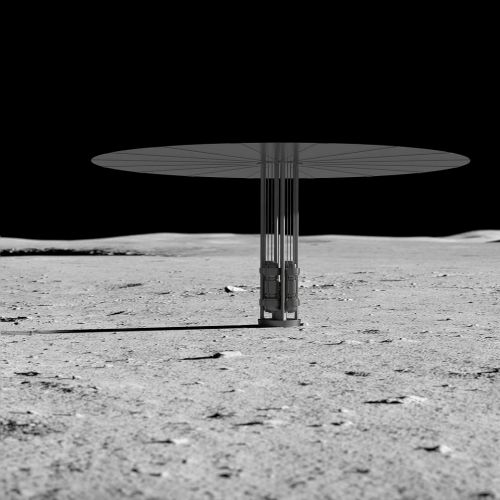
NASA and DoE funding contracts to build nuclear power plants on the moon and Mars

NASA and the U.S. Department of Energy (DoE) are working together to advance nuclear technologies in space. The agencies have selected three design concept proposals for a fission surface power system design that could be ready to launch by the end of the decade for a demonstration on the Moon.
This technology would benefit future exploration under the Artemis umbrella and would provide the equivalent of having electrical outlets on the Moon.
The contracts, to be awarded through the DoE’s Idaho National Laboratory, are each valued at approximately $5 million. The contracts fund the development of initial design concepts for a 40-kilowatt class fission power system planned to last at least 10 years in the lunar environment.
Relatively small and lightweight compared to other power systems, fission systems are reliable and could enable continuous power regardless of location, available sunlight, and other natural environmental conditions. A demonstration of such systems on the Moon would pave the way for long-duration missions on the Moon and Mars.
“New technology drives our exploration of the Moon, Mars, and beyond,” said Jim Reuter, associate administrator for NASA’s Space Technology Mission Directorate. “Developing these early designs will help us lay the groundwork for powering our long-term human presence on other worlds.”
Battelle Energy Alliance, the managing and operating contractor for Idaho National Laboratory, led the Request for Proposal development, evaluation, and procurement sponsored by NASA. Idaho National Laboratory will award 12-month contracts to the following companies to each develop preliminary designs:
- Lockheed Martin of Bethesda, Maryland – The company will partner with BWXT and Creare.
- Westinghouse of Cranberry Township, Pennsylvania – The company will partner with Aerojet Rocketdyne.
- IX of Houston, Texas, a joint venture of Intuitive Machines and X-Energy – The company will partner with Maxar and Boeing.
“The Fission Surface Power project is a very achievable first step toward the United States establishing nuclear power on the Moon,” said Idaho National Laboratory Director John Wagner. “I look forward to seeing what each of these teams will accomplish.”
The Phase 1 awards will provide NASA critical information from industry that can lead to a joint development of a full flight-certified fission power system. Fission surface power technologies also will help NASA mature nuclear propulsion systems that rely on reactors to generate power. These systems could be used for deep space exploration missions.
NASA’s fission surface power project is managed by the agency’s Glenn Research Center in Cleveland. The power system development is funded by the Space Technology Mission Directorate’s Technology Demonstration Missions program, which is located at Marshall Space Flight Center in Huntsville, Alabama.
Ace News Today agrees that providing continuous power sources off-planet are desirable and much needed capabilities. But we also wonder, “what could possibly go wrong?” For more info on NASA’s plans to have electricity available in remote locations, like the Moon and Mars, see the video accompanying this article.
(Source: NASA)
(Cover photo – Illustration of a nuclear fission power system on Mars. Image credit: NASA)
Posted by Richard Webster, Ace News Today / Follow Richard on Facebook and Twitter







